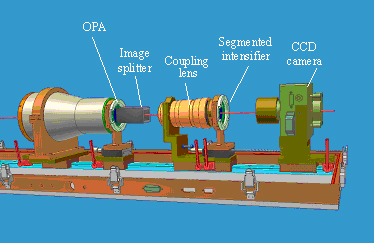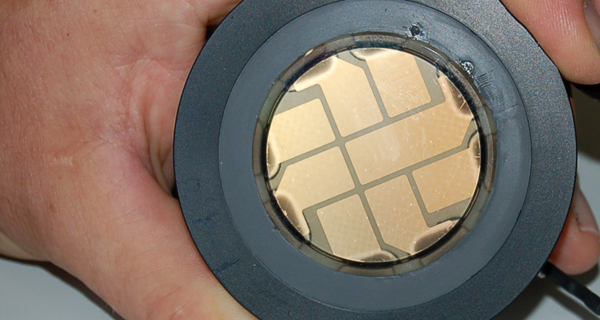|
In this project we shall develop a detector capable of capturing simultaneously several (up to 8) images at different pre-selected energies.
This is achieved by a speciall camera system as shown schematically in Fig. 2. The optical image behind the scintillating fibre plate,
which reflects the energy- and spatial distribution of the neutron field is amplified by a special image intensifier which preserves
the fast timing capability of the converter screen. The image is then split by a patented image splitter into 9 identical,
geometrically separated images. These focused onto a single 8-fold segmented image intensifier, shown in Fig. 3. 8 of the 9 segments are independently gated,
enabling up to 8 distinct, pre-selectable TOF-bins to be defined within each beam burst. This segmented intensifier can be read, in turn,
by a single, high resolution CCD camera. In this fashion, the camera can take up to 8 different images at pre-selected neutron energies.
Good statistics and high quality images are accumulated over many beam bursts. The development of this camera and its evaluation are the key tasks
in this project. |

Fig. 2 TRION-detector with the segmented image intensifier

Fig. 3 the 8-fold segmented image intensifier |